Energy Sprawl: the development of land and water area required for energy production
With smart large-scale planning along the way, we can ensure this development solves for the challenge of “energy sprawl”—the land and water area required for energy production. In doing so, we can reduce the land-use footprint of needed energy sources, safeguard ecosystem-services and biodiversity, and even potentially accelerate the transition to renewables.
- Switch to:
- Intro
- Interactive Tool
- Case Studies
- Resources
- Related Insights
Intro
Welcome to this special feature looking at solutions to the global challenge of “energy sprawl”, solutions that will help repower the planet in a sustainable way.
Predictions show a 65 percent increase in energy demand by 2050. To ensure a path to a stable climate, the world must increase its renewable energy development dramatically as the centerpiece of this expansion.
However, all energy sources present trade-offs. If we don’t plan the world’s needed energy development carefully, the resulting “energy sprawl", land and water area required for energy production, could cause unnecessary loss of important ecosystem services, potentially exacerbate conflicts over land use and pose a major threat to global biodiversity.
Solving this challenge is about making smart large-scale planning the new norm, anticipating our future energy needs, knowing the right energy mix and optimizing where to place it. In doing so, we can take advantage of the opportunity to reduce the land-use footprint of renewables, safeguard ecosystem-services and biodiversity, and even potentially accelerate the needed transition to renewable energy. It’s about finding a truly sustainable path to repowering the planet.
Explore our interactive Energy Sprawl tool to visualize the trade-offs between energy, carbon emissions and land use based on the world’s projected energy needs. And take a look at our set of short case studies from around the world showcasing how countries are already finding solutions to these challenges.
Nature Conservancy scientist Joseph M. Kiesecker is a lead editor (alongside scientist David E. Naugle) of a new book, Energy Sprawl Solutions: Balancing Global Development and Conservation (Publication Date: June 15, 2017). The book provides a roadmap for an energy future that conserves functional and connected ecosystems. The key to success, they show, is identifying the right energy mix and where to place it. This commonsense solution involves identifying and preemptively setting aside land where biodiversity should be protected, while consolidating energy development in areas with lower conservation value.
Learn more about the book here. For media inquiries, click here.
Qualifiers:
- Land footprints and CO2 emissions can vary greatly for different fossil fuel and renewable energy sources, but for simplicity, they were averaged across energy types.
- This tool only measures CO2 emissions and land-use trade-offs between fossil fuel and renewable energy sources, and as a result does not take into account other impacts of fossil fuel energy sources beyond CO2 emissions.
- Capacity factors were not included in these calculations; therefore land impacts are expected to be larger than indicated.
- CO2 emissions targets from the 2015 U.N. Conference of the Parties in Paris were modified to reflect only electricity use (~50% of total emissions).
Data Sources:
- EIA 2016. International Energy Outlook 2016. Accessed 4/5/2017 (full text available here) (data for figure ES-6: World net electricity generation by energy source, 2012-2040)
- Fthenakis, V., and J.C. Kim. 2009. Land use and electricity generation: a life-cycle analysis. Renewable and Sustainable Energy Reviews 13: 1465-1474 (some data were visually extracted from graphics in this source).
- Rockström et al. 2017. A roadmap for rapid decarbonization. Science 355(6331): 1269-1271.
- Schlömer et al. 2014. Annex III: Technology-specific cost and performance parameters. In: Climate Change 2014: Mitigation of Climate Change. Contribution of Working Group III to the Fifth Assessment Report of the Intergovernmental Panel on Climate Change [Edenhofer et al. (eds.)]. Cambridge University Press, Cambridge, United Kingdom and New York, NY, USA.
- World Bank. 2017. CO2 emissions from electricity and heat productions, % of total fuel combustion. Assessed 4/5/2017 (full text available here)
Disclaimer: It is essential for the world to increase renewable energy development dramatically in order to stabilize the climate. And by moving toward a more comprehensive, forward-looking approach to energy siting and management, we can take advantage of the opportunity to reduce the land-use footprint of renewables, safeguard ecosystem-services and biodiversity, and even potentially accelerate the needed transition to renewable energy. This interactive tool is designed to offer users the ability to explore the trade-offs between energy, CO2 emissions and land use. This tool does not represent positions of The Nature Conservancy.
Solving Energy Sprawl: Case Studies
Predictions show a 65 percent increase in energy demand by 2050. To ensure a path to a stable climate, the world must increase its renewable energy development dramatically as the centerpiece of this expansion.
However, all energy sources present trade-offs. Without careful planning of the world’s needed energy development, the resulting “energy sprawl”, the amount of land and water area needed to produce energy, could cause unnecessary loss of important ecosystem services to people, potentially exacerbate conflicts over land use and pose a major threat to biodiversity.
With the potential for rising energy demands around the world to convert as much as 20 percent of remaining natural lands, is it possible to balance energy development with biodiversity protection? The answer is yes. Solving energy sprawl rests in the critical albeit unglamorous work of ensuring large-scale advance planning.
By anticipating future energy needs—not just our needs now—and planning on a regional and large-landscape scale, rather than the piecemeal approach that has predominated in most countries, we can take advantage of the opportunity to reduce the land-use footprint of renewables, safeguard ecosystem-services and biodiversity, and even potentially accelerate the needed transition to renewable energy. It’s about knowing what the right energy mix is and where to place it. In doing so, we can place ourselves on a truly sustainable path to repowering the planet.
-
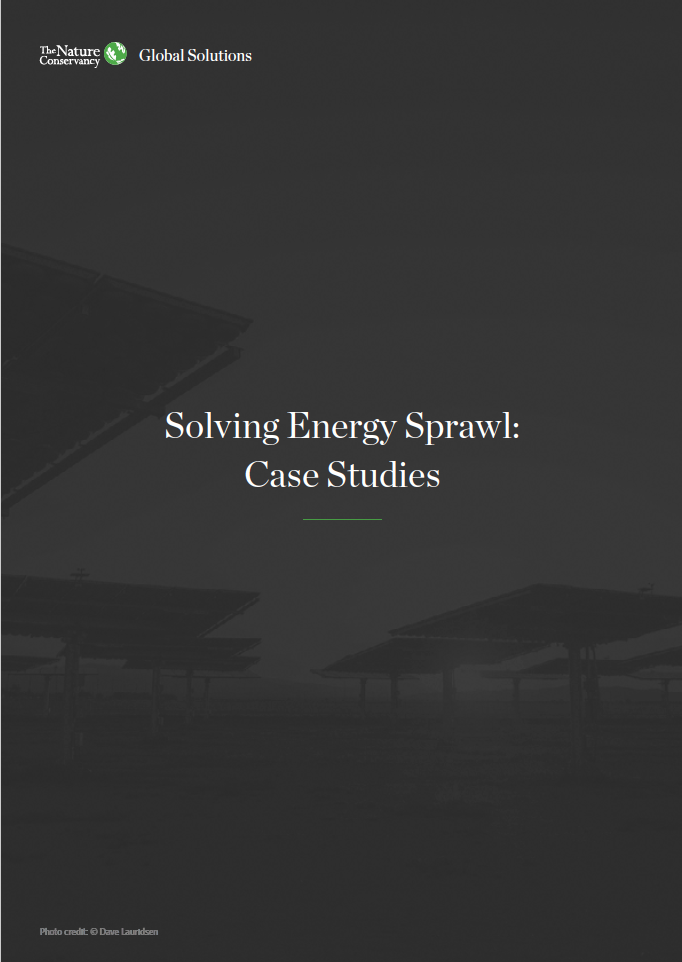
Download the PDF
PDF
With the potential for rising energy demands around the world to convert as much as 20 percent of remaining natural lands, is it possible to balance energy development with biodiversity protection?
DOWNLOAD
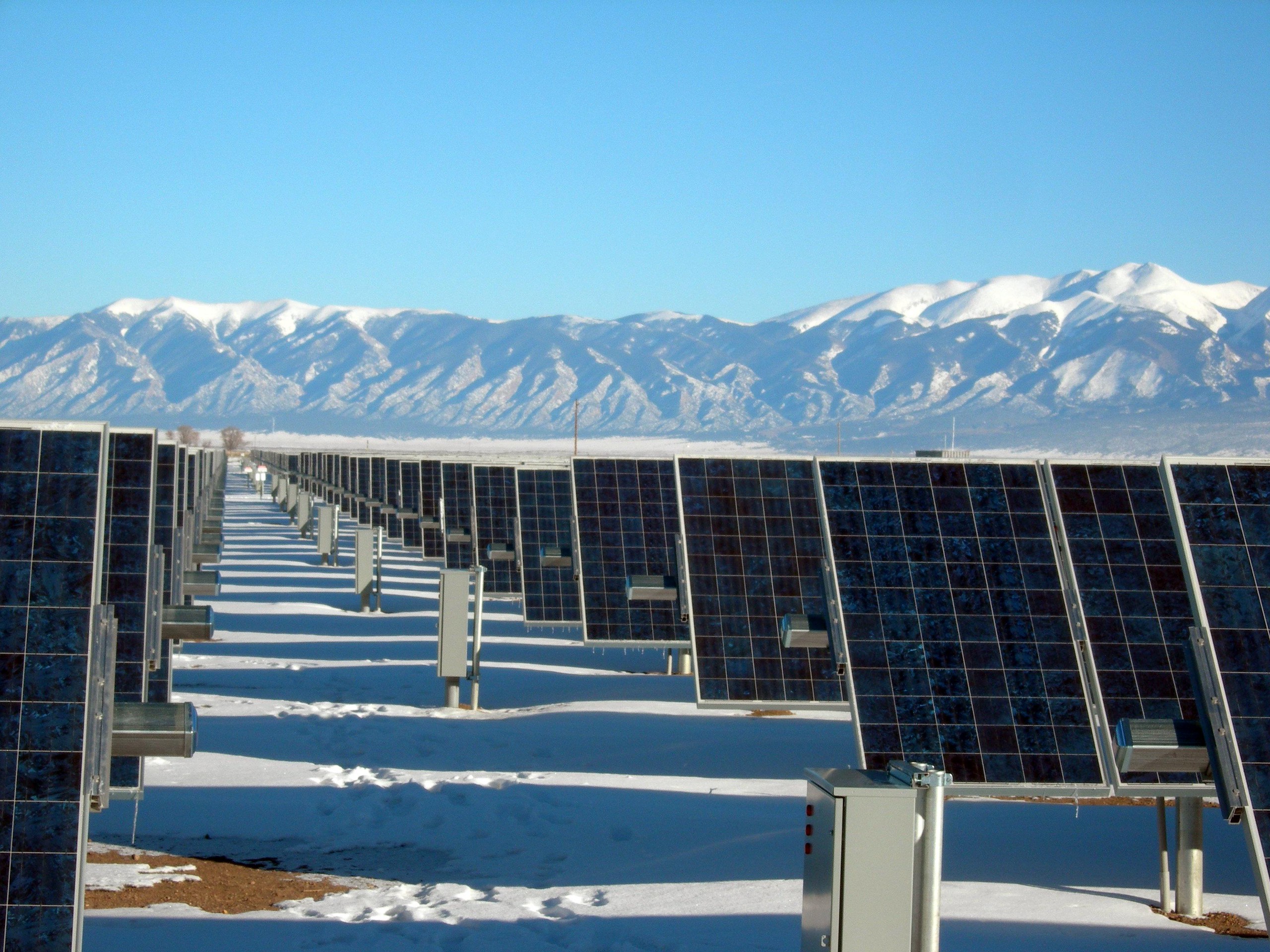
Repowering the Planet: Solar Energy Zones in the United States
However desirable the rapid growth in installed solar power capacity worldwide has been, it has posed, and will continue to pose, challenges for land use. Policies and funding have successfully stimulated new projects, but permitting and planning have delayed approvals and insufficient attention has been paid to impacts on other natural resources.
In 2012, the U.S. Bureau of Land Management, in line with comprehensive assessments of the value of lands carried out by The Nature Conservancy, adopted a landscape approach to accelerate utility-scale solar energy development on public lands. The landscape plan, which identifies ‘solar energy zones’ applies to a six-state region and assesses the potential deployment of solar energy development over the next 20 years, as well as its direct, indirect, and cumulative impacts. Since then, 19 solar energy development zones have been identified, and large areas of the region have been designated as off-limits for development because it would not be the best use of public lands. This approach has encouraged cross-agency collaboration and has cut project permitting time from an average of 18-24 months down to 10. Reliable data on conservation values has enabled better decisions about the siting, boundaries and desirability of solar projects.

Mongolia's Many Means: Development by Design for Landscapes, Wildlife and Culture
Mongolia’s vast landscapes are rich with coal, mineral and wind energy resources. How this resource development takes place will greatly affect the economy, nomadic livelihoods and the environment. The potential for conflict over competing claims for land looms large, requiring a delicate balance to be struck between development and conservation.
Recognizing this challenge, the government of Mongolia has supported landscape-scale planning for the entire country in support of sustainable development and has enacted an enlightened planning framework into law. They have embraced proactive planning, which accounts for biological resources, ecosystem services, climate change and projected development. This framework for identifying priority conservation areas and recommended practices at the outset is allowing the country to better minimize impacts and more effectively manage environmental and economic risks.
The plans are helping to guide project siting and mitigation, as well as the establishment of new protected areas that support nomadic livelihoods and wildlife. The approach includes a commitment to protect 30 percent of the country. To date, there has been real progress on that commitment. In roughly the last five years, the government has designated 150,000 square kilometers of new protected land—an area approximately the size of Nepal.

Coasts of the Caribbean: Developing Oil Resources in Venezuela's Marine Ecosystems
Venezuela is one of the most biologically diverse countries in the world, and its southern Caribbean basin is a center of extraordinary marine biodiversity. It is also the source of the country’s plentiful and economically vital offshore oil resources.
The risks to marine ecosystems from offshore oil exploration and production are well-known. But comprehensive planning, as frequently used in terrestrial developments, has rarely been seen in plans for the development of marine environments.
Working with Venezuela’s national oil company, PDVSA and other regional partners, The Nature Conservancy helped to develop a set of conservation-based standards and practices for inclusion in the permits for each oil and gas lease. The partnership shows how collaboration between conservation organizations, petroleum developers and environmental regulators can work.
In this case and others, it is vital to identify priority conservation areas and recommend good practices at the start. Where development must proceed, the likelihood of negative ecological impacts can be minimized by sticking to guidelines, policies and contractual requirements. By helping energy companies engage all parties in avoiding risk from the outset, decisions can be taken while there is still room for maneuver, so that ecological values are not irretrievably lost and livelihoods are not negatively affected.
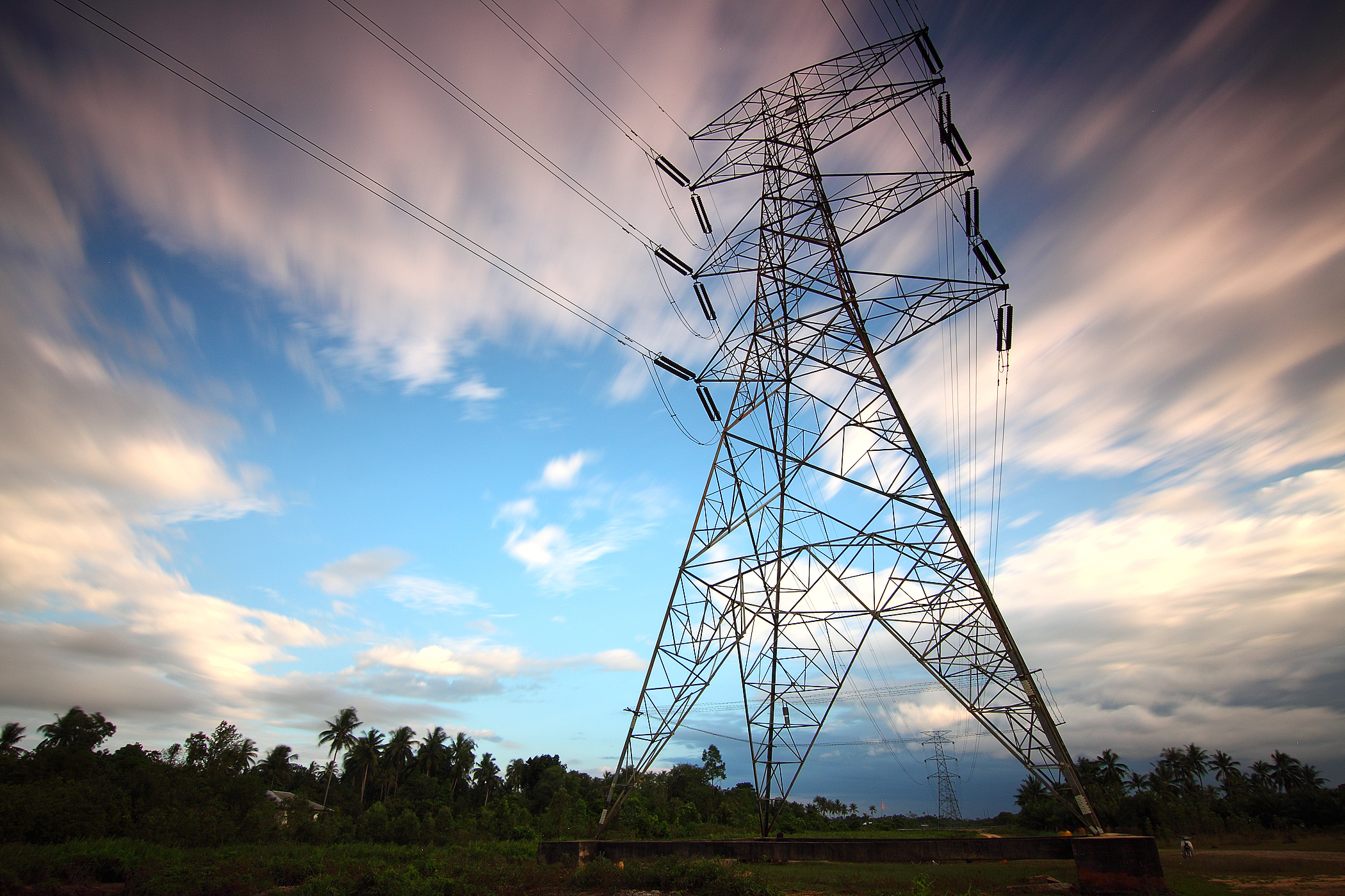
Power to the People: Pursuing Affordable and Cleaner Energy in India
As the global population grows, we need to generate far more energy from renewable sources. For example, India seeks to generate 40 percent of its power from renewables by 2030, and that cannot be achieved without massive new solar and wind installations.
But while renewables are the best path to reduce carbon emissions and other pollutants that damage human health, wind and solar farms have significant land footprints. The transmission lines required to transmit renewable energy into our power grid can further fragment habitats and become conduits for non-native species that disrupt ecosystems. Our attempts to meet climate change emission targets and close the energy access gap could create a new problem of “energy sprawl” that accelerates land-use change and conflict.
While we can continue to work towards decoupling economic growth from energy use—and significant advances have been made in some developed economies—we need to steer development to already-converted areas and make the most of existing transmission capacity. We must develop regional energy plans that avoid the most important natural lands and locate energy production as close as possible to the industries and houses where it will be consumed. It’s a huge challenge, but the establishment of renewables-based micro-grids and new tools that can simulate and evaluate the economic impact of energy choices give grounds for optimism. India has the potential to show the rest of the developing world how to achieve comprehensive access to affordable energy without compromising on environmental concerns.

Power of Rivers: Securing Sustainable Energy and Healthy Rivers
Hydropower, the world’s largest, most mature and most reliable source of low-carbon, renewable energy, can play an important role in future energy systems and contribute to climate goals. But new and existing hydropower projects must improve significantly in social and environmental performance. Experience has shown that poorly planned hydro projects can have enormous environmental and social impacts. Future forecasts also highlight that 70 percent of new hydropower expansion is expected to occur in river basins that support the highest diversity of fish species and high fish productivity. Without success in reducing environmental and social conflicts, hydropower may not reach its potential contribution to sustainable energy systems.
Examples around the world show that system-scale approaches to planning and management, rather than a project-by-project approach, can help solve many of the challenges associated with hydropower development. A systemic approach allows government planners and regulators to explore, compare and choose the best alternative to meet multiple objectives across a full river basin.
In China, the United States, Brazil and Mexico, changes to river basin management have reduced impacts to fish species and human populations while having minimal effect on power generation capacity. A new report, The Power of Rivers: A Business Case, explores how this system-scale approach can also avoid project cancellations, delays and cost overruns. Rather than assessing individual sequential projects, system planning and modelling can help governments identify a set of infrastructure investments that deliver broader benefits to both people and nature.

Fine Feathered Friend: Protecting the Sage Grouse in the United States and Canada
As a result of threats from energy development and cultivation, as well as catastrophic wildfire, invasive annual grasses and conifer invasion, the greater sage-grouse of western North America and southern Canada was considered a candidate species for listing under the US Endangered Species Act (ESA). Against this backdrop of precipitous decline, a proactive, coordinated, voluntary, and incentive-based effort provided a clear roadmap for landscape-scale conservation of the species and its ecosystem.
Strategic conservation features prominently in this story because user groups and state and federal governments wished to avoid ESA listing, and worked together to reduce threats. Regional planning and spatial prioritization provided the foundation for partners to target where to focus conservation efforts, balancing energy needs and habitat protection. As the primary land managers, the federal Bureau of Land Management and the US Forest Service completed the bulk of the public land policy protections. But significant investment was also made to conserve and enhance an additional five million hectares of private lands inside sage-grouse strongholds.
The sage-grouse story to date illustrates how a proactive, coordinated, landscape-scale conservation approach has the potential to maximize biodiversity conservation and maintain energy development. And it provides a real-world model for including biodiversity conservation across all development planning.

Colombian Communities: Accounting for Ecosystem Services in Energy Development
In countries across Latin America, the competing demands of energy growth and environmental protection are often considered in the context of a third challenge: indigenous peoples and local community rights. Historically in this region, energy development has not always respected indigenous peoples' rights, and indigenous groups have in some cases borne the bulk of environmental loss and associated human impacts. These factors combine to create a complicated context for decision making.
In Colombia, The Nature Conservancy has worked with the government to encourage the incorporation of ecosystem services concepts into environmental impact assessments and mitigation action relating to mining projects—developments which are important contributors to energy resourcing and economic well-being.
Using the concept of “servicesheds”—areas that provides a specific ecosystem service benefit to a specific group of people—stakeholders were able to reveal potentially harmful loss of ecosystem services in advance of their harm. It allowed land planners, developers and policy makers to consider alternatives that let energy development progress rapidly without creating damaging inequalities. The serviceshed method provided a replicable, robust way to inform energy development, to identify how proposed development may affect people and to determine whether possible ecosystem service losses create or worsen inequalities.

Biofuels of Brazil: Sustaining Production Expansion and Environmental Quality
Biofuels have been embraced as a promising alternative to oil, because in principle they can reduce carbon emissions, enhance domestic energy security and revitalize rural economies. But, biofuel feedstocks can use up to a thousand times more land per unit energy than natural gas, oil, coal, wind, hydropower or solar.
By 2040, global biofuel production may double or triple, requiring an additional 44 to 118 million hectares of land—expansion that would exceed a land area equivalent to the U.S. state of Texas. How this future land conversion occurs will have a major impact on biodiversity, ecosystems and the climate, as well as on challenges such as food production.
The Nature Conservancy has investigated the potential for targeted land-use planning to achieve commodity production and environmental goals in the Brazilian cerrado, the world’s most diverse tropical savannah. We applied spatial optimization techniques to map marginal service values, assess economic and environmental trade-offs, and find efficient land-use patterns.
The work has demonstrated that biofuels production and environmental goals can be met with landscape planning, even in a biodiversity and agricultural hotspot. Legal, voluntary and market mechanisms, if effectively implemented and widely adopted by agricultural producers in affected landscapes, hold promise of delivering large-scale conservation outcomes in the expanding biofuels sector.
Resources
-

A World at Risk: Global Risk Assessment
PDF
A first-of-its-kind assessment identifies the most at-risk regions in the world for habitat conversion.
DOWNLOAD -

The Power of Rivers Report
PDF
This report explores the potential for achieving balanced outcomes from hydropower development that works for people and nature.
DOWNLOAD -

The Power of Rivers: A Business Case
PDF
A new report—produced in partnership with McGill University, The University of Manchester and PSR—brings decision makers a first-of-its-kind global analysis to help yield better economic, social and environmental outcomes in hydropower planning and management.
DOWNLOAD -
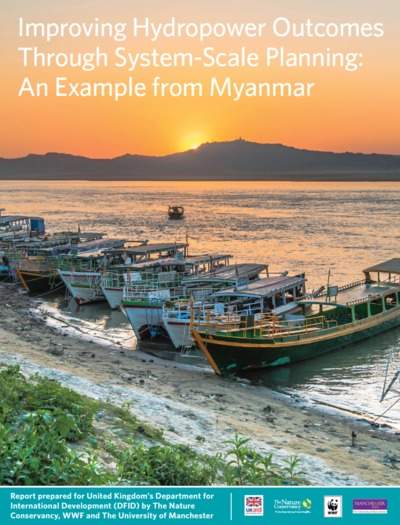
Improving Hydropower Outcomes: Myanmar
PDF
This report demonstrates a framework that could be applied in Myanmar and worldwide to change the trajectory of water resource development.
DOWNLOAD
Related Insights
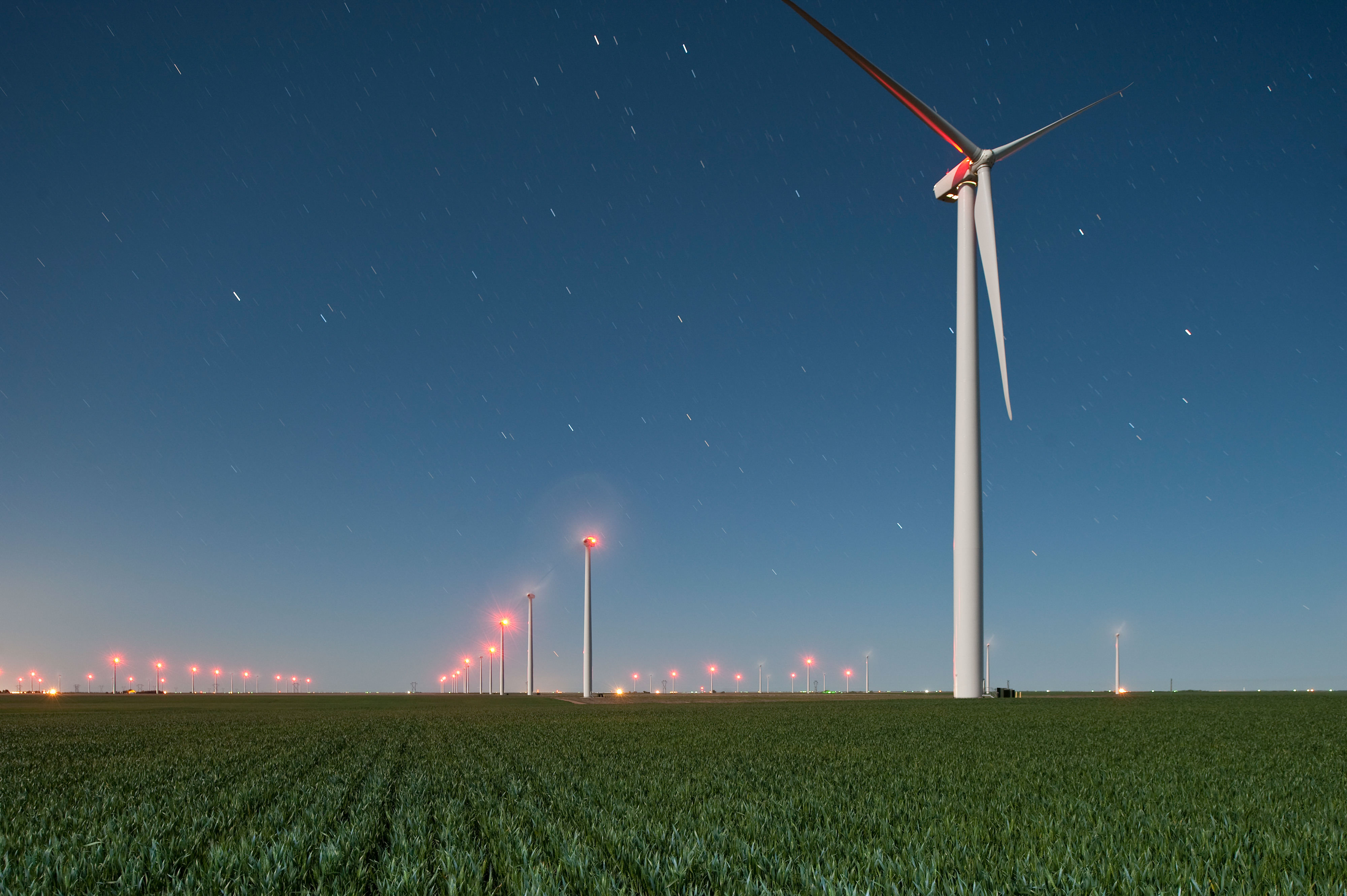
Renewables are Taking Off — But We Still Have to Plan Them Sustainably
We can’t forget about the important role that nature plays in mitigating climate change.
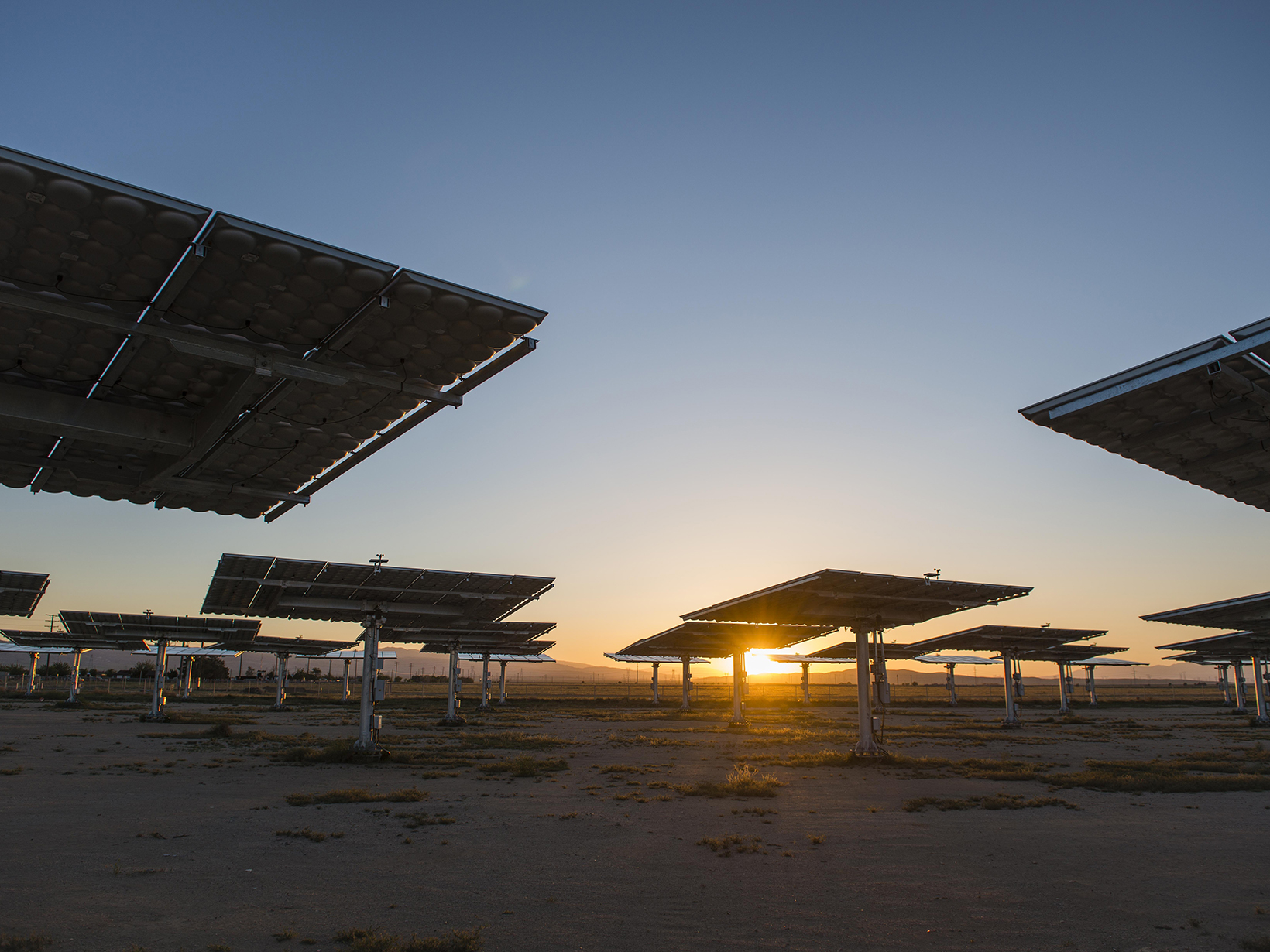
Minding The Gap Energy Sprawl And Access In India
We need to rapidly shift toward renewable energy sources—but we also need to plan this expansion wisely.
By Joe Kiesecker

Do We Even Know 'Sustainability' When We See It?
We must keep trying to define sustainability and, at a minimum, have it as a goal that we aspire to.
By Joe Kiesecker

Putting Conservation on the Map: A Blueprint for a Healthy Planet
New research from Conservancy scientists provides a blueprint for guiding development to best protect the last remaining wild places.
By Joe Kiesecker
Global Insights
Check out our latest thinking and real-world solutions to some of the most complex challenges facing people and the planet today.
